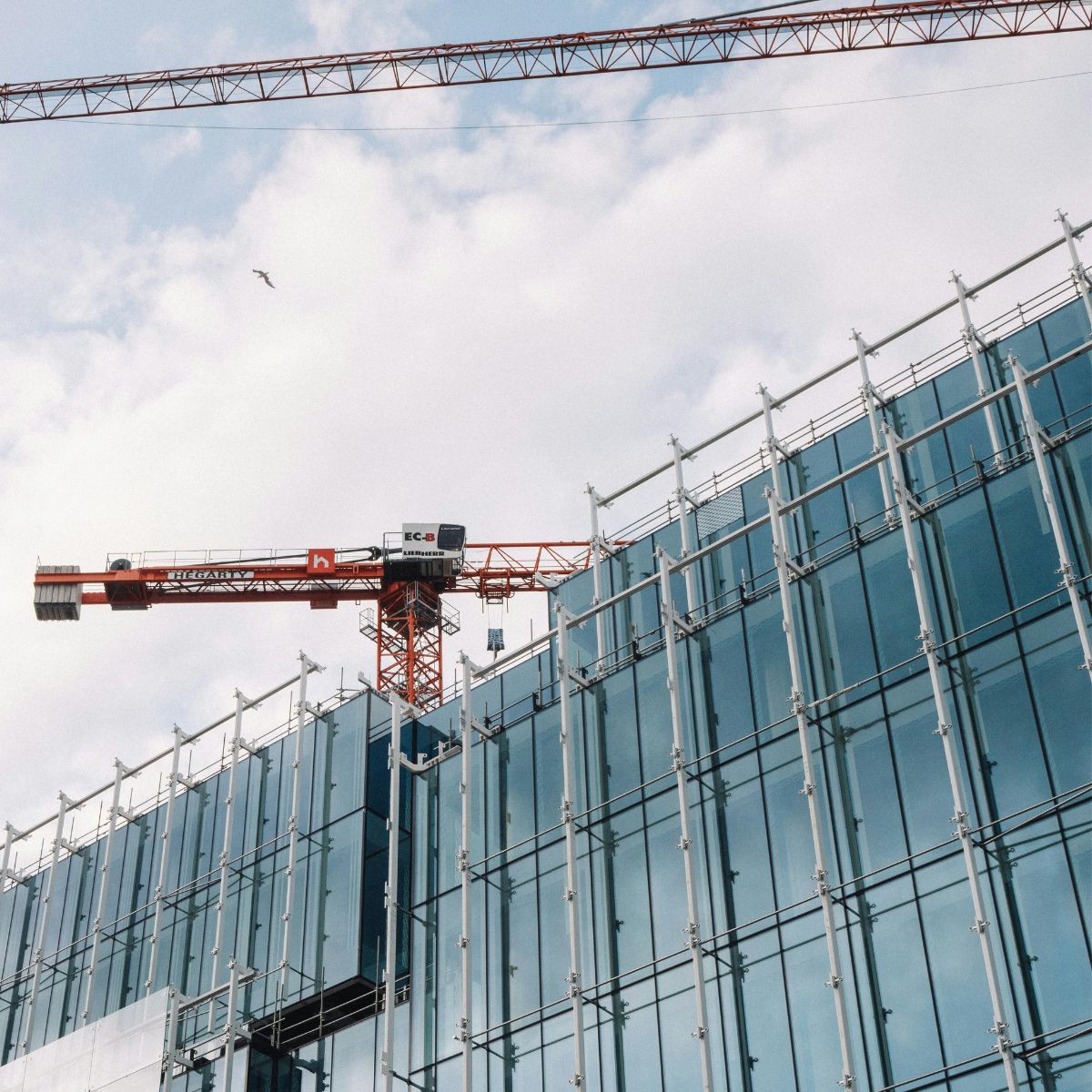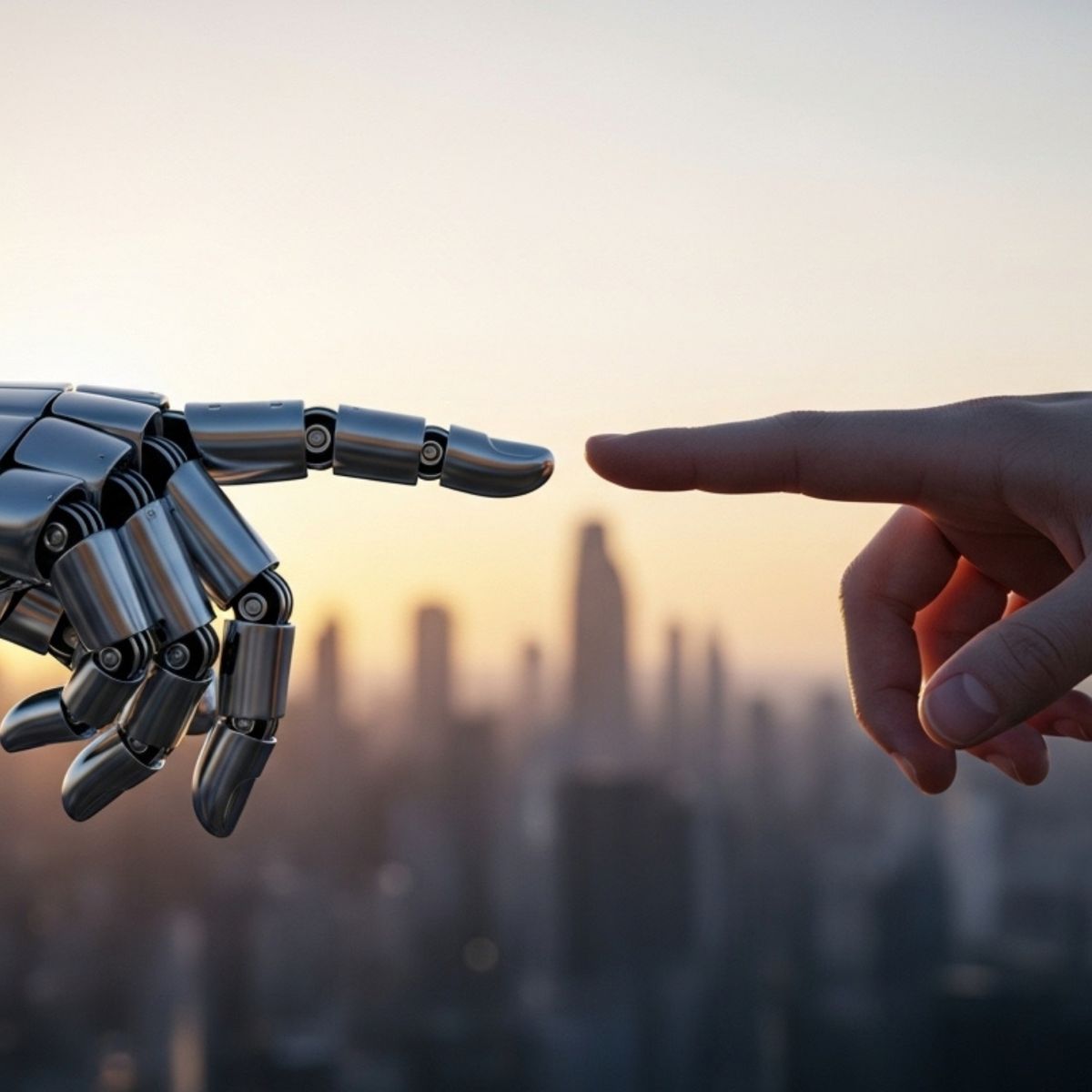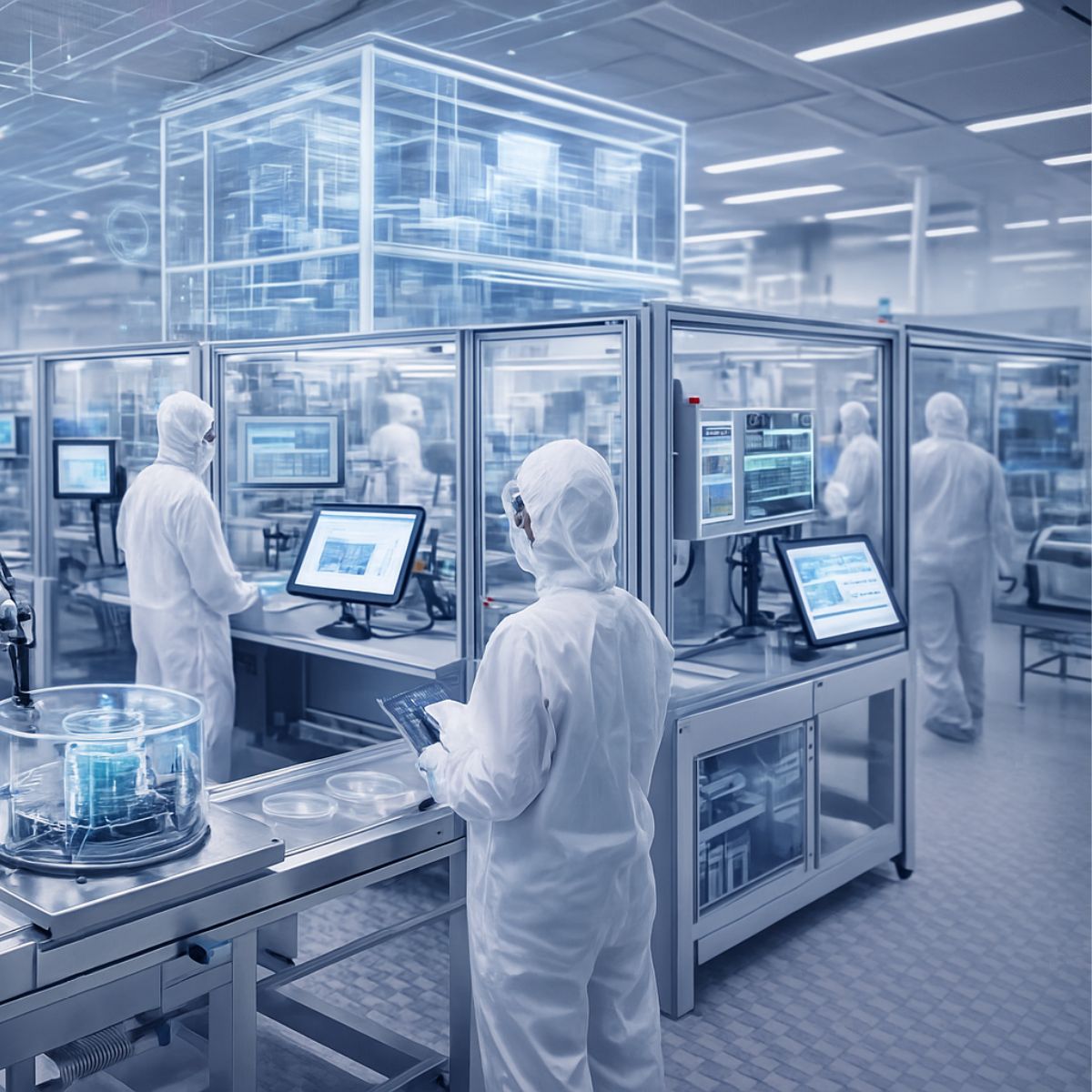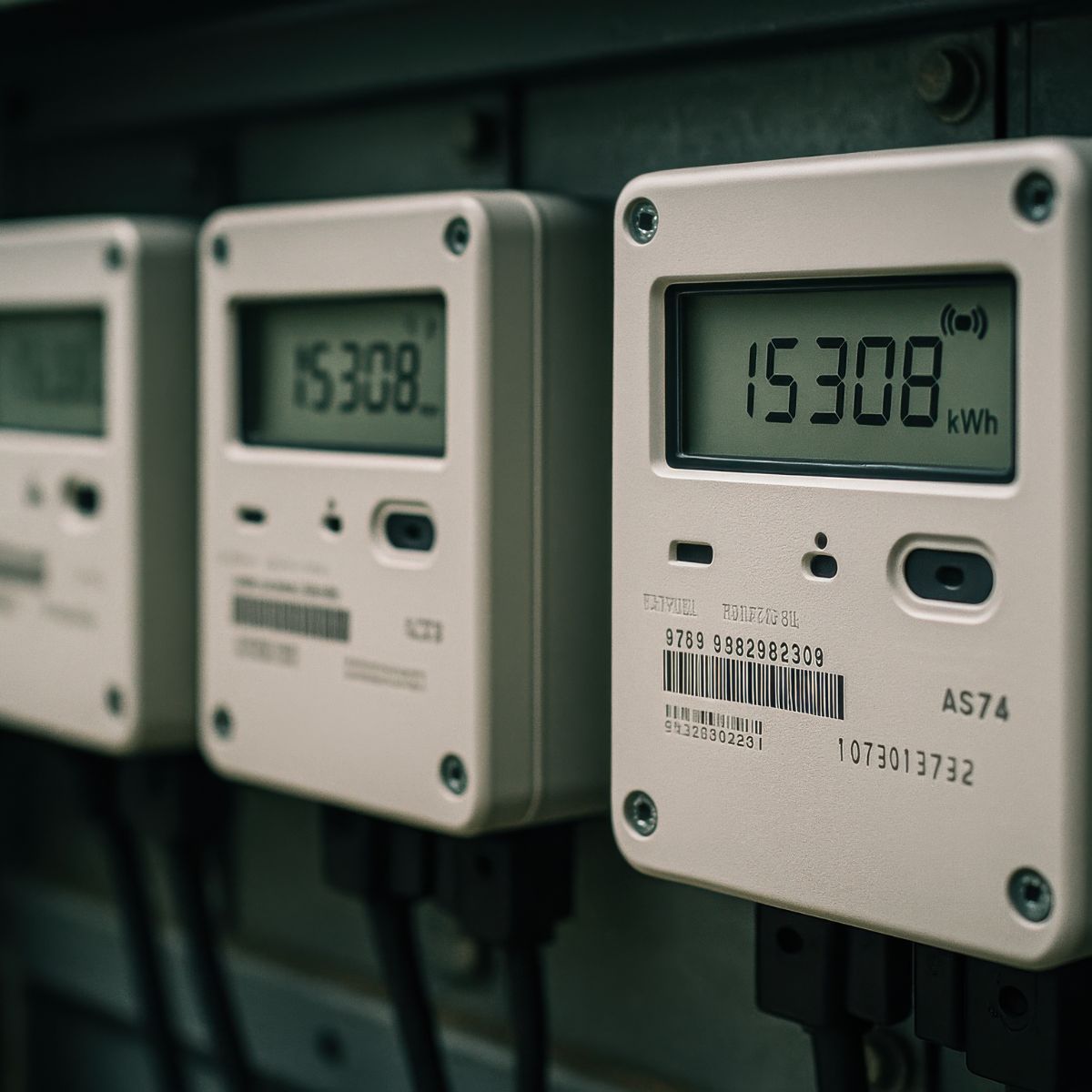Reading time: 4 minutes
Intelligent building systems are redefining the standards in facility management: Autonomous learning algorithms are replacing traditional automation concepts and ensuring continuous performance optimization. Real-world evidence shows energy reductions of 20 to 40 percent1 – a clear indicator of the central importance of AI technology in modern building management.
Paradigm Shift in Building Automation
Building automation relies on deterministic if-then rule sets. These static systems reach their limits with complex building structures and dynamic usage scenarios. Flexible working hours, volatile energy prices, and stricter climate protection requirements demand new approaches2.
AI-powered systems continuously process thousands of data points from various sources. They not only analyze current measured values but also consider historical data, external factors, and predicted developments. This holistic approach enables a new dimension of building optimization.
Technology of Self-Learning Systems
Machine learning forms the foundation of modern building AI. The systems use neural networks to model complex relationships and process data from four levels3:
Building level: Thermal mass, hydraulics, zoning
System level: Operating data, temperatures, volume flows
Environmental level: Weather data, forecasts, solar radiation
Occupancy level: Usage patterns, indoor air quality, bookings
This multidimensional analysis enables predictive control strategies. For example, an AI system recognizes that more heating energy is needed on Mondays – not because of lower temperatures, but due to cooling over the weekend. It starts heating on Sunday evening, utilizing cheaper night-time electricity rates and reducing output before expected solar radiation4.
Continuous Operations Optimization
Unlike traditional commissioning, self-learning systems are in permanent optimization mode. They dynamically adapt to:
- Seasonal changes and weather extremes
- Changed usage patterns and occupancy
- Equipment wear and performance losses
- Structural changes in the surroundings
The systems independently diagnose faults such as clogged filters or valve leaks. They generate prioritized maintenance recommendations based on energy savings potential and comfort impacts5.
Digital Twins as Innovation Drivers
Modern AI architectures generate digital twins that virtually map building behavior. These enable6:
- Risk-free testing of new control strategies
- Simulation of extreme operating conditions
- Prediction of component failures
- Optimization of maintenance intervals
The integration of Building Information Modeling (BIM) additionally increases simulation accuracy through geometric data and material properties.
Measurable Practical Success
Various building types benefit from AI optimization:
Office buildings: Systems learn work time patterns and optimize zone by zone. Documented savings: 20-30 percent7.
Retail: Central monitoring across hundreds of locations enables benchmarking. Coordinating lighting, air conditioning, and refrigeration saves 30 percent8.
Educational facilities: AI learns schedules and vacation periods. Optimized air quality demonstrably improves concentration ability.
Healthcare: Beyond energy savings, AI ensures critical parameters such as air quality in operating rooms.
IoT Integration and Cloud Technologies
The convergence of AI, IoT, and Cloud creates new optimization dimensions9:
Sensor integration: Wireless multi-sensors for temperature, humidity, CO₂, and motion enable close-meshed monitoring. Smart meters analyze load profiles, vibration sensors monitor equipment conditions.
Edge Computing: Preprocessing directly in the building reduces latency times. Edge devices enable real-time control even during connection interruptions.
Cloud Services: Central platforms offer unlimited computing capacity for complex analyses. Aggregation across multiple buildings enables benchmarking and best practice transfer.
Generative AI Revolutionizes Interaction
Facility managers communicate with the building in natural language. Queries like "Why is energy consumption higher today?" are analyzed and answered comprehensibly. The AI independently creates energy reports and autonomously develops new optimization strategies10.
Compelling Economics
The investment shows clear advantages:
- Energy costs: 20-40% reduction in thermal processes11
- Maintenance: 15-25% less through predictive maintenance
- Personnel: Relief from routine tasks
- Property value: Increase through sustainability certification
Innovative business models minimize risks:
- Performance Contracting: Guaranteed savings
- Pay-per-Use: Billing based on actual savings
- Subscription: Monthly fee for AI-as-a-Service
Amortization typically occurs within 12-24 months. Performance-based models are particularly attractive, where the investment is fully financed from realized savings.
Challenges and Solutions
Despite compelling advantages, implementation hurdles exist:
Heterogeneous legacy systems: Buildings often have systems from different manufacturers from various construction years. The lack of standardization complicates integration into a unified AI system.
"Black Box" problem: Many facility managers and technicians are skeptical of AI systems whose decision-making is not transparently comprehensible. The concern: What happens if the system makes wrong decisions? Who bears responsibility? This skepticism is particularly pronounced when years of experience are to be replaced by algorithm-based decisions. Operators fear loss of control over their systems and dependence on opaque systems.
Data protection and cybersecurity: Networking critical building infrastructure carries security risks. Personal data from presence sensors or access systems is subject to strict data protection regulations.
The industry is developing targeted solutions:
Explainable AI (XAI): This new generation of AI systems can explain their decisions. Instead of just reporting "Flow temperature set to 55°C", XAI provides the reasoning: "Based on the weather forecast (15°C, cloudy), expected occupancy (85% from 8 AM), and the building's thermal behavior (heating gradient 2.5K/h), this setting is optimal for 21°C room temperature with minimal energy consumption." Visualizations show the weighting of various influencing factors, allowing operators to understand the logic and intervene if necessary.
Additionally, standardized protocols are being developed to improve interoperability. Specialized training programs qualify professionals to work with AI-supported systems and reduce apprehension.
Future Perspectives
The evolution is just beginning. Trends are emerging:
- Sector coupling: Optimization of entire districts including electric mobility
- Autonomous buildings: Self-managing systems that act independently
- Quantum computing: Real-time optimization of highly complex systems
Strategic Action Recommendations
For owners and operators, concrete steps emerge:
- Inventory and potential analysis
- Pilot projects for technology validation
- Building solid data infrastructure
- Team competence development
- Selection of experienced technology partners
- Gradual scaling of successful concepts
The transformation to self-learning building operations is becoming a decisive competitive factor. Companies that act now secure sustainable advantages in a market characterized by efficiency and sustainability. The technology is mature, the business cases are convincing – the time to act is now.
Management Summary
Listen now: your management summary in audio format.










